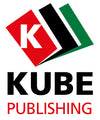Ancient Scribes and Qur’ānic Manuscripts: Uncovering Scribal Practices in the San'a Palimpsest – Dr Éléonore Cellard
Book production was a popular enterprise in early and medieval Islamic societies and the Qur’ān as a codex holds pride of place in its production. Some of the oldest and most ornate examples of books in Muslim societies are copies of the Qur’ān and close analysis of such manuscripts not only give a deeper understanding of the Qur’ān, but also of early calligraphic practices and bookmaking in general in the Muslim world.
From among the oldest corpus of the Qur’ān in existence are the Ṣanʿā’ manuscripts, which were discovered in Yemen in 1972 during a renovation at the Great Mosque of Ṣanʿā’. However, what is more remarkable is that on closer inspection, the corpus was discovered to be a palimpsest, meaning that the parchment had been reused and re-written.
Hence, the manuscripts actually contain ‘two texts’. The ‘lower’ original version of the text – which was scraped off and erased – and an ‘upper’ version of the text, the actual visible text which was written over the ‘lower’ text. This practice in general was not altogether uncommon in the early period due to the cost and value of parchments.
While the ‘upper’ text is the text of the Qur’ān which is visible on the parchment with the naked eye, the ‘lower’ text can also be seen through enhancement and reconstruction with the use of ultraviolet light and image processing. Collating the various fragments together show the Ṣanʿā’ manuscripts to consist of approximately 40% of the Qur’ān.
Despite work that has already been conducted on the Ṣanʿā’ manuscripts, their fragmentary nature and their early ascription means there is much we still do not know about them and their production. For example, the manuscripts carry no dating nor any indication of where they were produced geographically. Neither do we know anything about the scribes that wrote the text, nor the impetus or conditions that led them to do so.
In chapter three, Dr Éléonore Cellard, an expert on Qurānic manuscripts, focuses specifically on the material aspects of the Ṣanʿā’ manuscripts and attempts to uncover the scribal practices of the copyists who composed this corpus.
She pays close attention to the various fragments of the Ṣanʿā’ manuscripts in order to describe the corpus’s original book form. From this she also reconstructs the manner in which the scribes worked by examining aspects such as the way they laid out the various pages, and the scribal rules they adopted and adhered to. She also examines the way this group of scribes worked collaboratively to compose the manuscripts. Specific scribal practices that were adopted such as the way various chapters and verses were separated are also broached upon.
This excerpt is from The History of the Qur'an - Approaches and Explorations
Compiled by Redhwan Karim
Paperback - 9781847742346
Hardback - 9781847742353
The Qur'an's history, from its origins to its modern transmission, is a complex and understudied topic. This book delves into various stages of the Qur'an's history, examining its earliest manuscripts, variant readings, and translations.
It explores the unique orthography of the Qur'an, the codification process, and the theories of Muslim scholars on variant readings. By focusing on understudied aspects of the Qur'an's transmission, this work makes significant contributions to the field of Qur'anic studies.
The book features contributions from F. Redhwan Karim, François Déroche, Éléonore Cellard, Yousry Elseadawy, Nazir Khan, Ammar Khatib, M.A.S Abdel Haleem, Zahed Fettah, Yasir Qadhi, Khairil Husaini Bin Jamil, Stephen Cúrto, Meysam Kohantorabi and Afsan Redwan.

